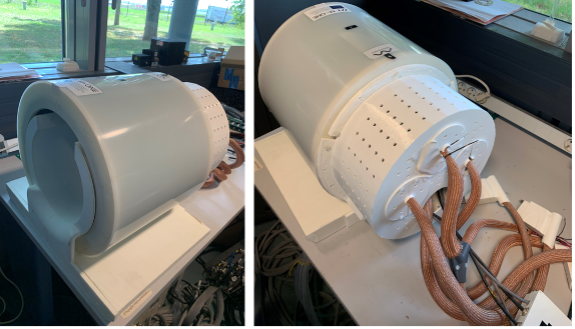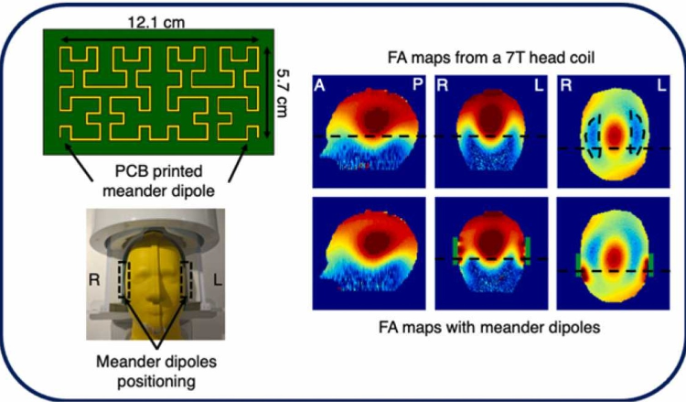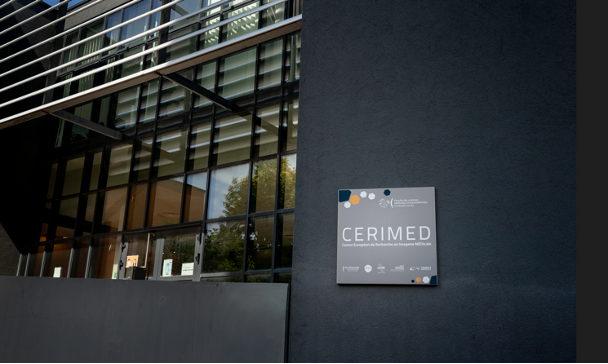
Magnetic resonance microscopy
Marine Moussu et al.
01.02.2021
In magnetic resonance microscopy, acquisition times are often very long to obtain sufficiently high signal to noise ratio (SNR) and image resolutions, typically dozens of microns or less. This double constraint can be mitigated at ultra high field and with efficient transceiving coils, however the acquisition durations are still around dozens of hours. An alternative consists in using multiple-coil probes: several individual coils are included in the same transmit/receive chain. When using a single RF channel, all the coils receive the noise from the others and the SNR is degraded compared to a coil used individually. The solution we propose consists in using ceramic resonators as individual elements, since, as demonstrated in previous studies, when properly designed they enable significantly improving the SNR of the reference coil (solenoid) at ultra-high field. In this prospect, we studied the electromagnetic coupling of identical dielectric resonators and the features of the resulting coupled modes. As observed, the coupling strength, that influences the resonances of the coupled resonators, can be varied by changing the relative positions of the resonators. The results from this modeling were used to propose a prototype of a dual ceramic resonator probe, that demonstrated equivalent performance than the solenoid coil in biological samples.




